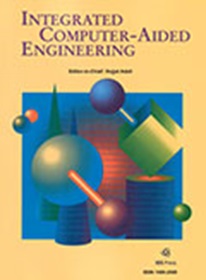Battery parameter identification for unmanned aerial vehicles with hybrid power system
IF 5.3
2区 计算机科学
Q1 COMPUTER SCIENCE, ARTIFICIAL INTELLIGENCE
引用次数: 0
Abstract
Unmanned aerial vehicles (UAVs) nowadays are getting soaring importance in many aspects like agricultural and military fields. A hybrid power system is a promising solution toward high energy density and power density demands for UAVs as it integrates power sources like internal combustion engine (ICE), fuel cell (FC) and lowcapacity lithium-polymer (LIPO) batteries. For robust energy management, accurate state-of-charge (SOC) estimation is indispensable, which necessitates open circuit voltage (OCV) determination and parameter identification of battery. The presented research demonstrates the feasibility of carrying out incremental OCV test and even dynamic stress test (DST) by making use of the hybrid powered UAV system itself. Based on battery relaxation terminal voltage as well as current wave excitation, novel methods for OCV determination and parameter identification are proposed. Results of SOC estimation against DST through adaptive unscented Kalman filter (AUKF) algorithm show that parameters and OCV identified with longer relaxation time don’t yield better SOC estimation accuracy. Besides, it also discloses that OCV played the vital role in affecting SOC estimation accuracy. A detailed analysis is presented showing that mean discharging rate and current wave amplitude are the major factors which affect the quality of OCV identified related to SOC estimation accuracy.混合动力系统无人驾驶飞行器的电池参数识别
如今,无人驾驶飞行器(UAV)在农业和军事等诸多领域的重要性日益凸显。混合动力系统整合了内燃机(ICE)、燃料电池(FC)和低容量锂聚合物(LIPO)电池等动力源,是满足无人飞行器高能量密度和功率密度需求的理想解决方案。要实现稳健的能源管理,准确的充电状态(SOC)估算必不可少,这就需要确定电池的开路电压(OCV)和参数识别。本研究展示了利用混合动力无人机系统本身进行增量 OCV 测试甚至动态应力测试(DST)的可行性。基于电池弛豫端电压和电流波激励,提出了新的 OCV 确定和参数识别方法。通过自适应无cented 卡尔曼滤波器(AUKF)算法针对 DST 估算 SOC 的结果表明,用较长的弛豫时间确定参数和 OCV 并不能获得更好的 SOC 估算精度。此外,它还揭示出 OCV 在影响 SOC 估计精度方面起着至关重要的作用。详细的分析表明,平均放电率和电流波幅是影响与 SOC 估计精度相关的 OCV 识别质量的主要因素。
本文章由计算机程序翻译,如有差异,请以英文原文为准。
求助全文
约1分钟内获得全文
求助全文
来源期刊

Integrated Computer-Aided Engineering
工程技术-工程:综合
CiteScore
9.90
自引率
21.50%
发文量
21
审稿时长
>12 weeks
期刊介绍:
Integrated Computer-Aided Engineering (ICAE) was founded in 1993. "Based on the premise that interdisciplinary thinking and synergistic collaboration of disciplines can solve complex problems, open new frontiers, and lead to true innovations and breakthroughs, the cornerstone of industrial competitiveness and advancement of the society" as noted in the inaugural issue of the journal.
The focus of ICAE is the integration of leading edge and emerging computer and information technologies for innovative solution of engineering problems. The journal fosters interdisciplinary research and presents a unique forum for innovative computer-aided engineering. It also publishes novel industrial applications of CAE, thus helping to bring new computational paradigms from research labs and classrooms to reality. Areas covered by the journal include (but are not limited to) artificial intelligence, advanced signal processing, biologically inspired computing, cognitive modeling, concurrent engineering, database management, distributed computing, evolutionary computing, fuzzy logic, genetic algorithms, geometric modeling, intelligent and adaptive systems, internet-based technologies, knowledge discovery and engineering, machine learning, mechatronics, mobile computing, multimedia technologies, networking, neural network computing, object-oriented systems, optimization and search, parallel processing, robotics virtual reality, and visualization techniques.
 求助内容:
求助内容: 应助结果提醒方式:
应助结果提醒方式:


